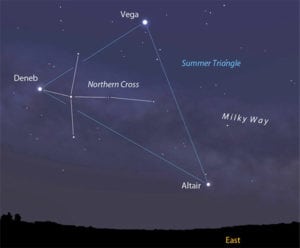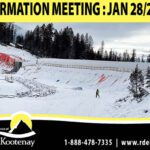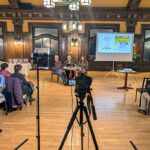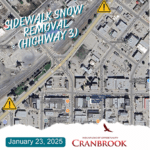Home »

Subaru’s Night of the Falling Stars
By Dan Hicks
Despite our fiery summer’s ambient smoke, Subaru’s Night of the Falling Stars, the Kootenays’ first ever Perseid Meteor gathering, was held Sunday, August 12 under a clear natural dark sky at Noke Creek Campground, west of Lumberton.
Despite some initial apprehension regarding lingering late evening smoke and cloud, as forecast, the sky cleared before midnight and directly above, Vega – the fifth brightest star as seen from Planet Earth, emerged as the first star for the 16 adult and child stargazing participants who thereafter were able to see a few falling stars and familiarize themselves with the basic stellar configurations of our summer night sky, like the Summer Triangle, Northern Cross and Big Dipper.

The Summer Triangle is the most prominent summer night asterism (not an actual constellation), an illusion – its three stars Vega, Altair and Deneb, are located at vastly different distances from us; they are respectively 25, 17, and 1,400 light years away; of course Deneb, to be so bright yet so distant, is a massive supergiant star.
Viewed through a 150 mm refractor telescope, Mars at a historically close 3.3 light minutes away, was an orange sandstorm-wracked orb, and Saturn, at 71 light minutes away, displayed its signature rings.
As Mars’ next close visit will not be until 2035, the children who saw the proximal Red Planet magnified at Noke Creek will be young adults when again they see it with a similar prominence.
Later in the night, the telescope, with its motorized mount properly coordinated with the sky’s longitude and latitude, slewed directly to the Hercules Globular Cluster (aka M13) in the Keystone asterism. The stellar glob is a venerable deep sky object 21,000 light years away – home to a tightly packed community of over 100,000 aged stars.
Low montane night temperatures chilled the novice stargazers into departing by 3 a.m., excepting Subaru of Cranbrook General Manager Jordan McKee and his family in their travel trailer, a lone stargazer in his mini-bowler-styled trailer, and me – out on the lawn under a sleeping bag and tarp.
As the constellations revolved above me from east to west through the night, I observed that the 2018 Perseids were diminished from their 2016 show; and were more numerous when the night began, notwithstanding a brief burst of meteors at 4:30 a.m.
Though I found the temperature tolerable, I was surprised by the heavy upland dew that came late in the night, condensation absent from dry lowland locales like Cranbrook.
High in the southeastern sky, Capella, the sixth brightest star (two stars actually), was the last to fade from a clear dawn sky where the smoke was confined to the Moyie Range hills on the southern horizon.
To augment their memories of the night sky’s stellar patterns, each of the seven Subaru stargazer vehicular groups were given double-sided Chandler Night Sky Planispheres (for 40 to 50 degrees Latitude North), ingenuously simple rotating two-dimensional all-season representations of the night sky (no batteries required). Used either outdoors under the stars, or indoors on the kitchen table, the planispheres function as constellational learning aides for all ages.
Mercury rises as a morning star (Venus (low), Jupiter, Saturn, and Mars are now evening planets – listed west to east).
On August 26 (Sunday), Mercury, closest planet to the sun, orbiting it at a scorching distance of only 3.2 light minutes, rises in the east at 4:45 a.m. MDT, two hours before sunrise; Earth’s Goldilocks Zone distance from our big yellow main sequence star is a more comfortably life-compatible 8.3 light minutes. [Full moon -night of August 25, Saturday].
Lead image: The Hercules Globular Cluster in the Keystone asterism of the Hercules constellation; a dense Milky Way Galaxy neighbourhood most unlike our own; as it was 21,000 years ago (present appearance unobtainable). Image source: Wikipedia







